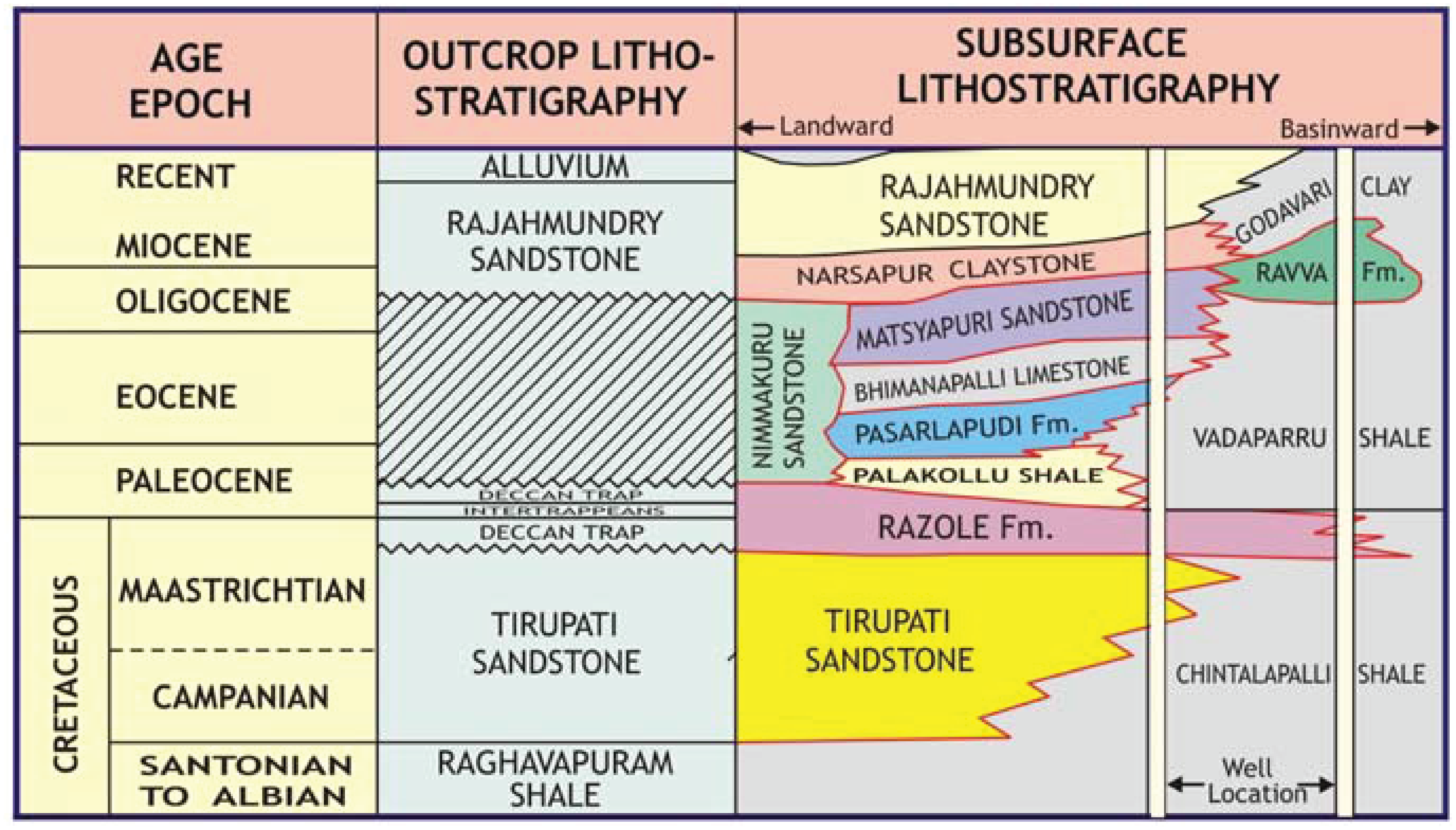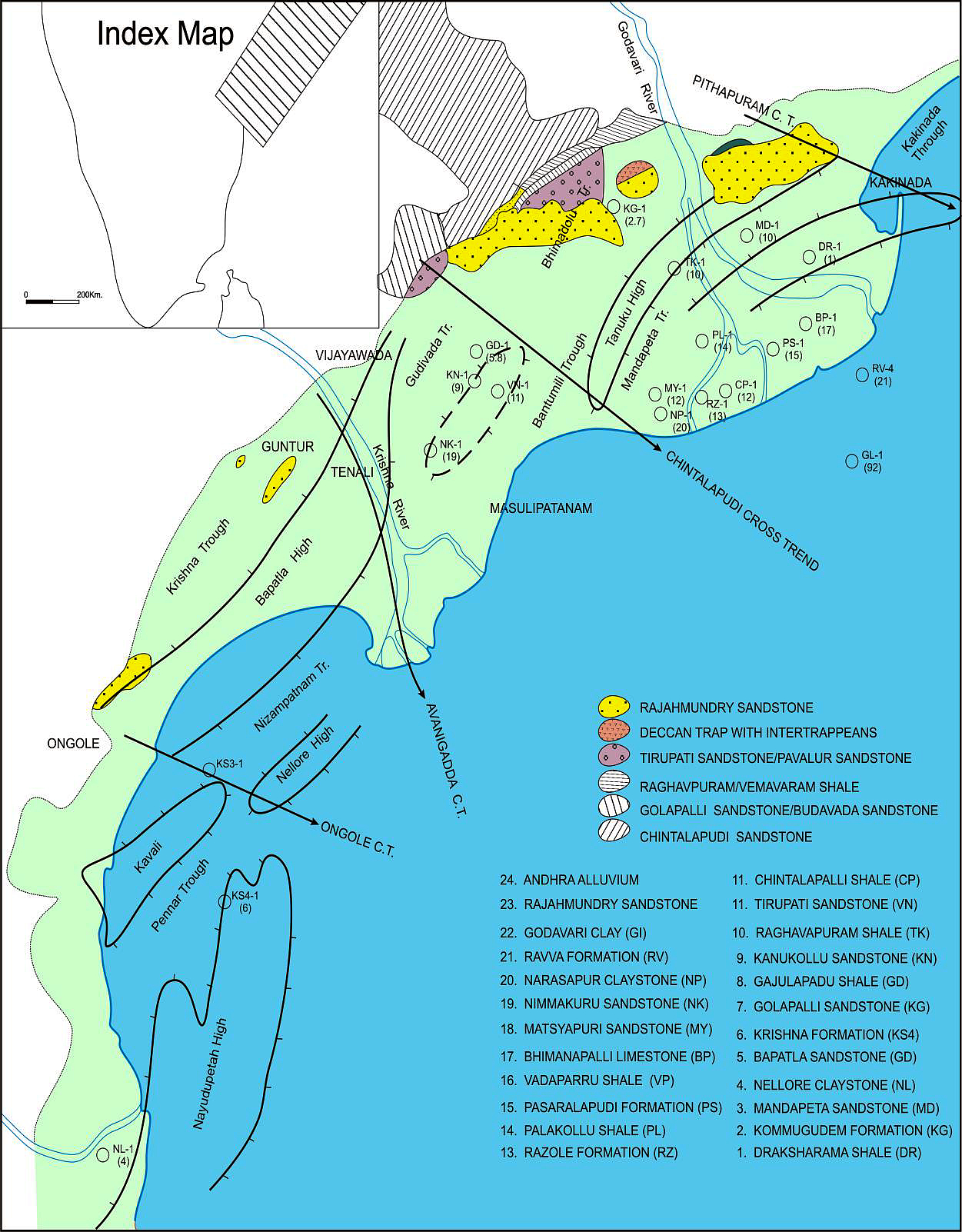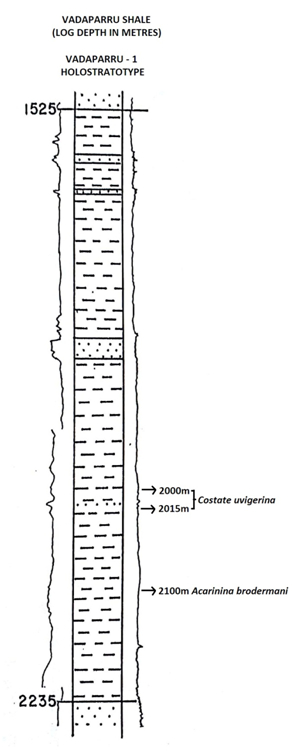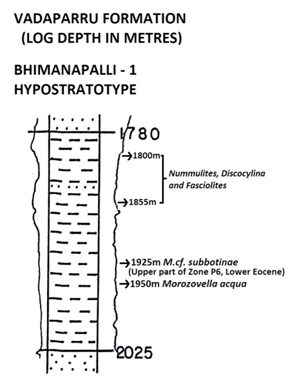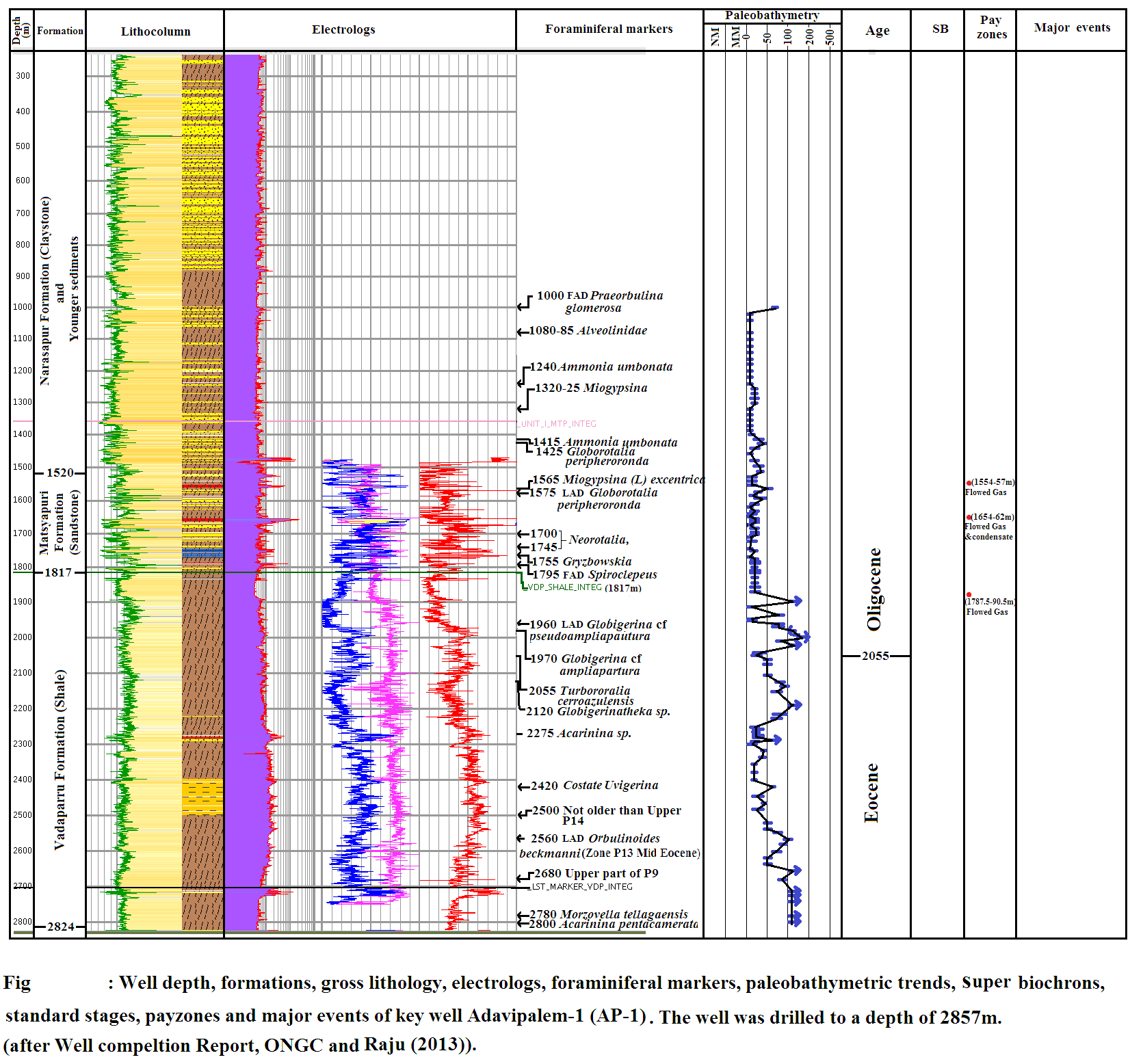Vadaparru Fm
Type Locality and Naming
BASINAL: The type section is in the well Vadaparru-A (depth interval: 1525-2235 m). The hypostratotype is in the well Bhimanapalli-A (depth interval: 1780-2025 m). It was named after the village Vadaparru by ONGC team steered by Venkatarengan et al. (1993) adopted and issued as Document-VII by KDMIPE, ONGC, Dehradun (1993). [Original Publication: Rao, G.N. (1990) Subsurface stratigraphic nomenclature of Krishna-Godavari Basin, ONGC, unpublished report.]. Reference well: Well Bhimanapalli-A, Interval 1780-2025 m and thickness is 245 m.
Synonyms: Vadaparru Shale
[Figure: Generalized Late Cretaceous-Cenozoic lithostratigraphy transect, Krishna-Godavari Basin. From Keller et al., 2011, Jour. Geol. Soc. India, 78:399-428, their Fig. 2]
[Figure: Map showing the locations of designated holostratotype section for the formation in the KG Basin (After ONGC, Pandey and Dave, 1998) in Raju et al., 2021, ONGC Bulletin, Special Issue, Vol. 56, No. 2]
Lithology and Thickness
Sandy claystone. In the type section, this formation consists mainly of shales with minor sand layers. The shales are light grey to dark grey, moderately hard, micaceous, fissile and silty. It is rich in organic matter and feebly calcareous with occasional presence of pyrite. The sandstone is dull to milky white fine- to coarse-grained, calcareous well cemented. In Well Bhimanapalli-A, the formation is mainly dark grey to brownish grey, carbonaceous silty shale alternating with dark grey fossiliferous claystone and thin sandstone and siltstone. It has a thickness varying from 245-610m. The offshore facies assigned to this formation name attains a thickness of >2000m.
[Figure 1: Well log of Vadaparru-1 Holostratotype (modified after Venkatarengan et al., 1993)
[Figure 2: Well log of Bhimanapalli-1 Hypostratotype (modified after Venkatarengan et al., 1993)]
Relationships and Distribution
Lower contact
Unconformable with the Razole Fm.
Upper contact
Conformable with the Ravva Fm and locally with the Matsyapuri Fm (although this is interfingering/transitional of nearshore Matsypuri Fm sands to the offshore Vadaparru claystone)
Regional extent
It is extensively developed in basinal Krishna-Godavari Basin.
GeoJSON
Fossils
Foraminifera-Acarinina broedermanni, Morozovella aequa, M. subbotinae, costate Uvigeina, Nummulites, Discocyclina and Fasciolites.
Age
Depositional setting
Inner-Middle neritic.
Additional Information
This formation attains a thickness of >2000m in offshore area.
[Figure 3: Lithocolumn, well logs, foraminiferal datums and paleobathymetry of Vadaparru Fm in well AP-A showing lateral variation (after well completion report, ONGC and Raju (2013)]
